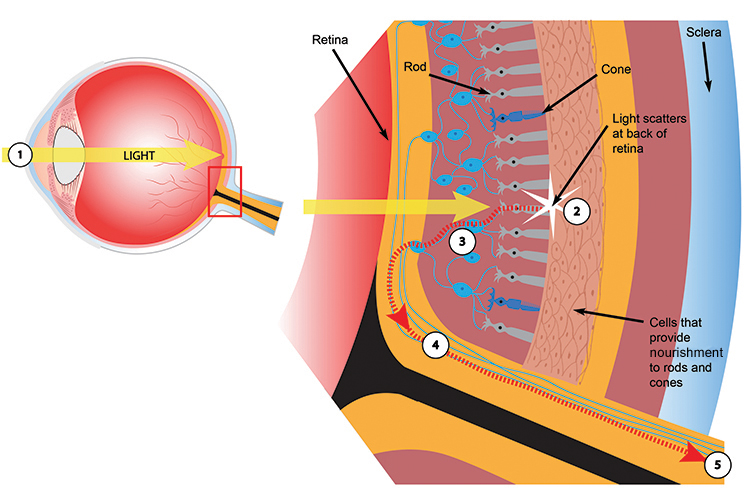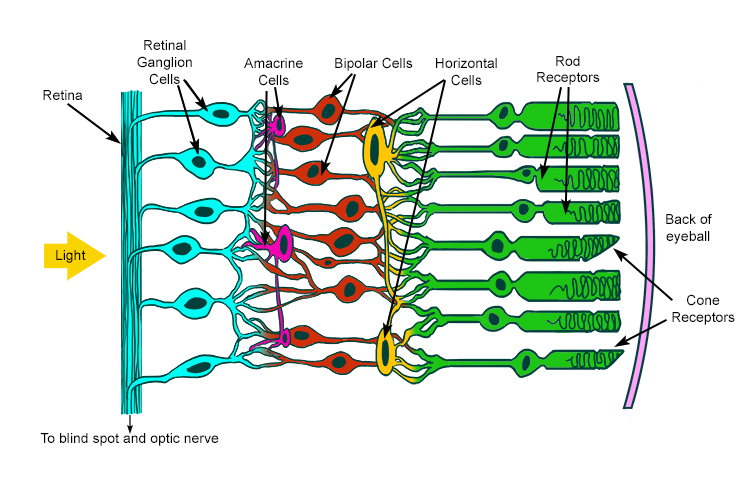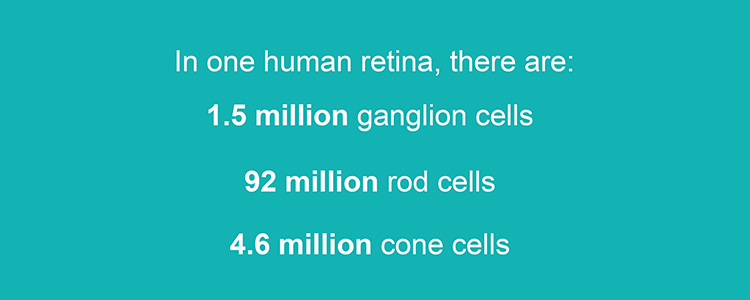Rods and cones – light receptors
The specialised cells of the retina are called photoreceptors and there are two types: rods and cones. They receive light via the cornea, pupil and lens.

Light moves through the eye on to the retina and is absorbed by rods and cones. But wait . . . the rods and cones are at the BACK of the retina. Aren’t they set up backwards?

Actually, the “backwards” organisation of rods and cones is helpful for several reasons. For instance:
1. While a person is awake, rods and cones are constantly working (sending signals). This requires the movement of millions of molecules, which need to be replenished, so the rods and cones need to be as close as possible to the cells that replenish them.
2. Some light is scattered when it hits the back of the retina. With the “backwards” arrangement, cells close to the rods and cones absorb the scattered light, making vision much clearer and avoiding possibly damaging effects.
For information only
The rod and cone receptors pass a sending signal through what’s known as a bipolar cell, which in turn passes a signal through to a ganglion cell. The ganglion cell has a long axon that extends through the optic nerve and into the brain.





